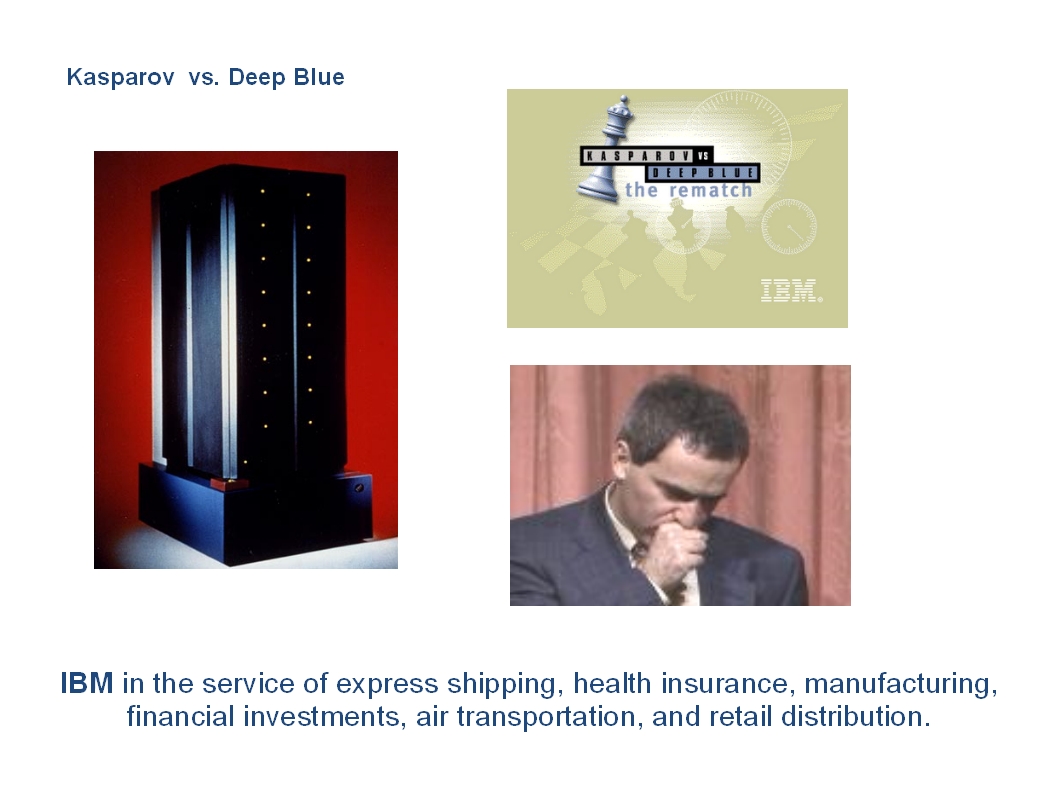One could argue that the representational model finds its most impressive expression in the chess computer. When IBM was testing the dual processor, to meet growing demands for mass processing of data/information in industry, finance and commerce, their publicity stunt was to use the architecture to build a chess programme, Deep Blue, and match it with Garry Kasparov. It became the ultimate man vs. machine contest in the late 1990s and received a lot of publicity. It also inspired projections of what was happening in the mind of Kasparov compared to Deep Blue. Following examples were posted on the IBM website:
Deep Blue can examine and evaluate up to 200,000,000 chess positions per second. Garry Kasparov can examine and evaluate up to three chess positions per second.
Garry Kasparov uses his tremendous sense of feeling and intuition to play world champion-calibre chess. Deep Blue is a machine that is incapable of feeling or intuition.
Garry Kasparov is able to learn and adapt very quickly from his own successes and mistakes. Deep Blue, as it stands today, is not a "learning system". It is therefore not capable of utilizing artificial intelligence to either learn from its opponent or "think" about the current position of the chessboard.
Deep Blue is stunningly effective at solving chess problems, but it is less "intelligent" than even the stupidest human. Garry Kasparov is highly intelligent. He has authored three books, speaks a variety of languages, is active politically and is a regular guest speaker at international conferences.
Garry Kasparov is skilled at evaluating his opponent, sensing their weaknesses, then taking advantage of those weaknesses. While Deep Blue is quite adept at evaluating chess positions, it cannot evaluate its opponent's weaknesses.
